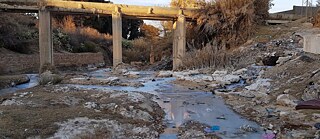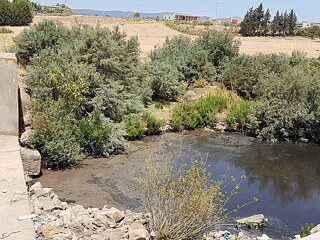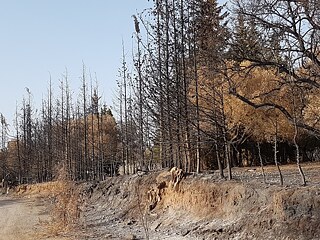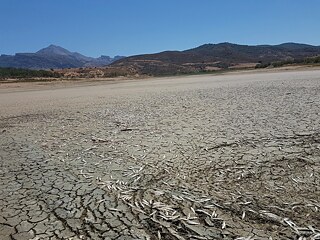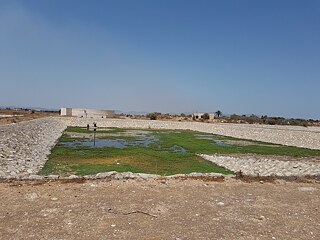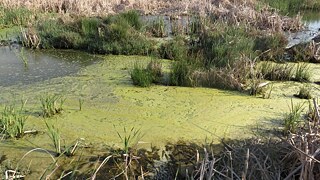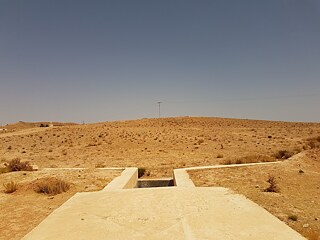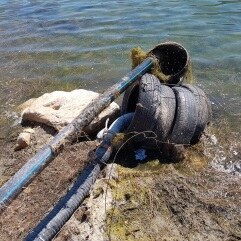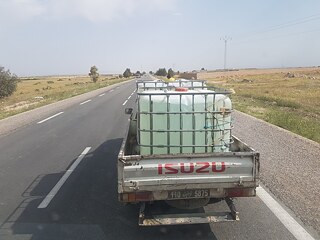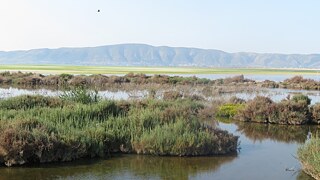Water is life – and the motor of development. Little wonder, therefore, that Tunisia has gone to great lengths since gaining independence in 1956 to mobilise its water resources in order to meet the country's demand for drinking and irrigation water and to protect the environment by improving sanitation. As a result, its drinking-water supply rate and the number of households connected to the sanitation network are higher than anywhere else in North Africa. But in view of the fact that Tunisia's economy is so dependent on agriculture – and consequently on water – and faces huge challenges caused by climate change, has Tunisia done enough?
In 2016, the rate of drinking water coverage was 97.7% at national level, putting Tunisia at the top of the rankings in this area in North Africa. The average for rural areas in 2014 was, however, 92.2%. There is a great disparity between these areas, however, and other areas that have no access to water whatsoever, such as Kasserine Governate, where over 12,000 people are not connected to the water supply. In periods of drought, supplying water is problematic – even in urban areas.
In terms of sanitation, Tunisia has adopted a policy that seeks to develop the sector in order to improve the living environment of all Tunisians and, in particular, to allow for the re-use of the by-products of sewage treatment (using dry sewage sludge as an agricultural fertiliser, to generate electricity, or simply as a source of energy for cooking). With the help of state subsidies, considerable improvements in sanitation have been made in urban areas. Rural areas, however, have not kept pace with this development. Overall, the connection of households to the public sanitation network has increased from 73.8 percent in 2004 to 89.86 percent in 2015. Once again, this rate is above average for the region.
The State of Water Resources and the Environment
Despite all this, the reality is that Tunisia is a country with low conventional resources, such as water. Given that most of the country is situated in an arid zone, the availability of water per annum and per inhabitant has been below the absolute water scarcity threshold of 500 cubic meters per year per inhabitant for over 30 years now.At present, 92 percent of the surface water potential in Tunisia has been exploited. In the process, ecosystems, which are the primary users of water, have been weakened. By way of example: six major dams were built on the six main watercourses around Lake Ichkeul, depriving the lake of resources that it used to have and that kept things in equilibrium. This resulted specifically in a decrease in the migratory bird populations that depended on it.
What's more, for more than 25 years, a thousand million dinars have been allocated to water and soil conservation works such as the diversion of water and the creation of a zone where spraying is permitted. The aim of these works was to increase agricultural production by maintaining soil fertility, reducing soil loss, and thereby also reducing erosion and the risk of sediments accumulating in dams. Nevertheless, at present, 3.5 million hectares are threatened by erosion. Moreover, every year, Tunisia loses about 25 million cubic meters of water because of dam sedimentation. It is worth remembering that soil is of prime importance as a water reservoir for rain-fed agriculture and, consequently, for the Tunisian economy. The reason for this is that of the average 36 billion cubic meters of water available to Tunisia every year, only 4.2 cubic kilometres is potentially renewable while 11.5 cubic kilometres of rain water is retained by soil, forests and rangeland.
Over four-fifths of the mobilised water (82 percent) is allocated to agricultural irrigation, which accounts for only 4 percent of agricultural land. What's more, 80 percent of the water required for irrigated agriculture comes from groundwater, which is currently suffering from an alarming level of over-exploitation as a result of the proliferation of illicit drilling for water. This in turn results in a deterioration in the quality of groundwater resources (for example as a result of saltwater intrusion) and, consequently, the salinisation of soil.
The low level of sanitation coverage in rural Tunisia is the cause of the pollution of discharge environments (such as wadis) by waste water. What's more, only 50 percent of waste water treatment plants supply treated water that meets waste water standards. This in turn increases pollution of the environment and also the sea, which is the final place of discharge for domestic water.
It is important to note that when describing water scarcity in Tunisia, two major factors are overlooked: the first is that people in Tunisia not only use water from dams or from groundwater, but also from the rainwater retained by the soil for the production of rain-fed cultures and pasture lands. The second factor concerns the total demand for water in Tunisia, which is ensured by importing different agri-foodstuffs (such as wheat, sugar, etc.) and others that are not produced in the country. This (virtual) importation of water in the form of traded goods, covers one-third of the country's overall water requirements. What's more, Tunisia's total demand for water is 65 percent higher than the world average, which points to considerable wastage at different levels of the production process. The National Institute of Consumption indicates that food waste costs each Tunisian 68 dinars a month, some 18% of all expenditure on food.
Climate Change: an Additional Constraint
The fragility of the water situation in Tunisia and the dependence of its economy on rainwater is aggravated by the direct and indirect effects of climate change on the sectors of activity that rely heavily on water, as well as on the ecosystems that have already been weakened by anthropogenic pollution. The climate projections drawn up by the National Institute of Meteorology indicate that on the basis of an average scenario, we will see a temperature increase of over 1 degree between now and 2050 and of over 2 degrees between now and 2100, while precipitation could decrease by 20 percent between now and 2100. Extreme weather events such as flooding, drought and heatwaves are likely to become more frequent, posing a major threat to the availability of water. In effect, the rise in temperature will result in an increase in evaporation from water reservoirs, will cause soil to dry out and will increase demand for water across all sectors. The drop in rainfall and the rise in periods of drought will have a drastic impact on the replenishment of groundwater reserves, the availability of drinking water, and on both irrigated and rainfed agriculture.This has led to illicit and illegal drilling in the public water sector and even the use of untreated waste water for irrigation needs, the emergence of a drinking water market, and the growth in water use-related conflicts. A considerable decrease in the quality of water has been observed during periods of drought, resulting in dangerous consequences in terms of sanitation. Resorting to the desalination of sea water in order to ensure the supply of drinking water (four desalination plants are currently under construction) is, in itself, insufficient. It is also considered a source of marine pollution, the consequences of which are very hard to control.
The Way Forward
The adaptation of plans for climate change necessitates the revision of the governance model in place and the renewal of the current infrastructure upstream of the production of all new water. Given that access to drinking water is a constitutional right, the priority is to safeguard this right for all Tunisians.The sale of water at a rate that cannot cover the cost of its production is a major problem for those responsible for water supply. While holding fast to the principle that water is vital for humanity, what is needed are innovative technical and financial mechanisms to protect water, reduce food waste and install water meters that cannot be tampered with in order to monitor and check all meter readings. Opting for a higher water rate does not prevent the government from creating a subsidy for the most vulnerable members of the population. It is also important to develop an agricultural policy that makes the most of every drop of water used in the irrigated agriculture sector, but also envisages solutions for rain-fed agriculture, which relies so heavily on the climate.
The water security of a country is a matter of national security. For this reason, it is important to shift the governance of all water resources to a level above the Ministry of Agriculture (to the head of government or even the head of state), which, being responsible for the sector that is the largest consumer of water, cannot itself guarantee optimum management of this resource.
December 2019
